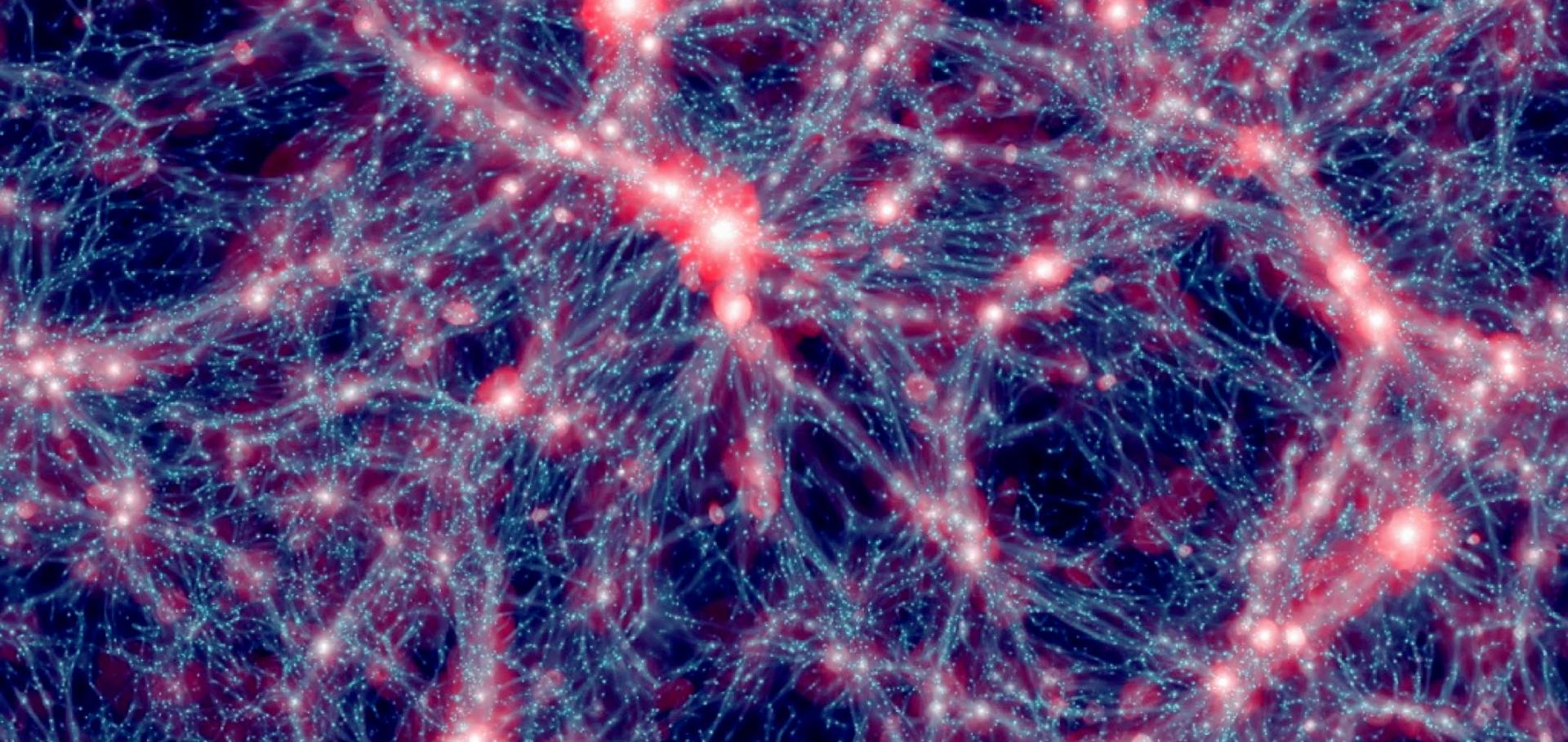The star formation history in the last 10 billion years from CIB cross-correlations
Monthly Notices of the Royal Astronomical Society Oxford University Press 520:2 (2023) 1895-1912
Abstract:
The Cosmic Infrared Background (CIB) traces the emission of star-forming galaxies throughout all cosmic epochs. Breaking down the contribution from galaxies at different redshifts to the observed CIB maps would allow us to probe the history of star formation. In this paper, we cross-correlate maps of the CIB with galaxy samples covering the range 푧 . 2 to measure the bias-weighted star-formation rate (SFR) density h푏휌SFRi as a function of time in a model independent way. This quantity is complementary to direct measurements of the SFR density 휌SFR, giving a higher weight to more massive haloes, and thus provides additional information to constrain the physical properties of star formation. Using cross-correlations of the CIB with galaxies from the DESI Legacy Survey and the extended Baryon Oscillation Spectroscopic Survey, we obtain high signal-to-noise ratio measurements of h푏휌SFRi, which we then use to place constraints on halo-based models of the star-formation history. We fit halo-based SFR models to our data and compare the recovered 휌SFR with direct measurements of this quantity. We find a qualitatively good agreement between both independent datasets, although the details depend on the specific halo model assumed. This constitutes a useful robustness test for the physical interpretation of the CIB, and reinforces the role of CIB maps as valuable astrophysical probes of the large-scale structure. We report our measurements of h푏휌SFRi as well as a thorough account of their statistical uncertainties, which can be used to constrain star-formation models in combination with other data.Tomographic measurement of the intergalactic gas pressure through galaxy-tSZ cross-correlations (vol 491, pg 5464, 2020)
MONTHLY NOTICES OF THE ROYAL ASTRONOMICAL SOCIETY Oxford University Press (OUP) 499:1 (2020) 520-522
Abstract:
© 2020 Oxford University Press. All rights reserved. The paper 'Tomographic measurement of the intergalactic gas pressure through galaxy-tSZ cross-correlations' was published inMNRAS, 491, 5464-5480 (2020). After publication a typographical error in our analysis pipeline code was discovered, which slightly affected some of our results. In particular, our implementation of the generalised NFW profile (GNFW) described in Arnaud et al. (2010) lacked a factor of 1 - bH in the calculation of R500. We have corrected this error, re-run our analysis and present our updated results and comments (where applicable) in this manuscript. (i) Table 3 is updated with new best-fitting values. (ii) Likewise, Figs 8 and 9 are also updated with the new values of the best-fitting 1 - bHand<bPe>. (iii) Finally, our combined constraint on bH following this procedure (equation 48) is 1 - bH= 0.75 ± 0.03. While the main conclusions remain unchanged, it is worth pointing out that the best-fitting mass bias value 1 - bH= 0.75 ± 0.03 is now at a ~3-4s tension with the results measured by Planck Collaboration et al. (2016a) (1 - bH= 0.58 ± 0.04), combining tSZ cluster number counts and the TT CMB power spectrum. Consequently, our results can no longer be viewed as evidence of compatibility between the best-fit cosmology and the clustering properties of galaxies in the datasets used. Further, the best-fitting value of the mass bias is no longer at odds with the one derived from hydrodynamical simulations (Biffi et al. 2016), the estimate from CMB lensing mass calibration (Zubeldia & Challinor 2019), and other direct calibration efforts (e.g. Smith et al. 2016; Eckert et al. 2019), which seem to prefer smaller missing mass fractions (1 - bH~ 0.8). Lastly, our results are in agreement with Chiang et al. (2020), who explore the cosmic thermal history using SZ tomography.Tomographic measurement of the intergalactic gas pressure through galaxy–tSZ cross-correlations
Monthly Notices of the Royal Astronomical Society Oxford University Press 491:4 (2019) 5464-5480
Abstract:
We cross-correlate maps of the thermal Sunyaev–Zeldovich (tSZ) Compton-y parameter published by Planck with the projected distribution of galaxies in a set of low-redshift tomographic bins. We use the nearly full-sky 2MASS Photometric Redshift and WISE × SuperCOSMOS public catalogues, covering the redshift range z ≲ 0.4. Our measurements allow us to place constraints on the redshift dependence of the mass–observable relation for tSZ cluster count analyses in terms of the so-called hydrostatic mass bias parameter 1−bH. These results can also be interpreted as measurements of the bias-weighted average gas pressure 〈bPe〉 as a function of redshift, a quantity that can be related to the thermodynamics of gas inside haloes and used to constrain energy injection processes. We measure 1−bH with ∼13 per cent precision in six equispaced redshift bins, and find no evidence for a redshift-dependent mass bias parameter, in agreement with previous analyses. Our mean value of 1−bH=0.59±0.03 is also in good agreement with the one estimated by the joint analysis of Planck cluster counts and cosmic microwave background anisotropies. Our measurements of 〈bPe〉, at the level of ∼10 per cent in each bin, are the most stringent constraints on the redshift dependence of this parameter to date, and agree well both with previous measurements and with theoretical expectations from shock-heating models.Galaxy-halo alignments in the Horizon-AGN cosmological hydrodynamical simulation
Monthly Notices of the Royal Astronomical Society Oxford University Press (2017)
Abstract:
Intrinsic alignments of galaxies are a significant astrophysical systematic affecting cosmological constraints from weak gravitational lensing. Obtaining numerical predictions from hydrodynamical simulations of expected survey volumes is expensive, and a cheaper alternative relies on populating large dark matter-only simulations with accurate models of alignments calibrated on smaller hydrodynamical runs. This requires connecting the shapes and orientations of galaxies to those of dark matter halos and to the large-scale structure. In this paper, we characterise galaxy-halo alignments in the Horizon-AGN cosmological hydrodynamical simulation. We compare the shapes and orientations of galaxies in the redshift range $0Enhanced constraints on large-scale structure from secondary CMB anisotropies
Abstract:
The large-scale structure of the Universe encodes invaluable information about the fundamental cosmological parameters, the physics of structure formation, and the thermodynamic history of the Universe. In this thesis, we explore how secondary anisotropies of the Cosmic Microwave Background (CMB), particularly the thermal Sunyaev-Zeldovich (tSZ) effect and CMB lensing, can improve constraints on the large-scale structure. We develop a framework to cross-correlate tSZ maps from the Planck satellite with the distribution of galaxies at low redshift using tomographic bins with data from the 2MASS Photometric Redshift catalogue and WISE x SuperCOSMOS. These cross-correlations enable precise measurements of the bias-weighted gas pressure, ⟨𝑏Pe⟩, and the hydrostatic mass bias parameter, 1−bH, as a function of redshift.This thesis is primarily based on two complementary studies employing galaxy clustering (𝛿𝑔 × 𝛿𝑔), galaxy-tSZ cross-correlations (𝛿𝑔 × y), and galaxy-CMB lensing cross-correlations (𝛿𝑔 × K) to constrain cosmological and thermodynamic parameters across six redshift bins (𝑧 ∈ [0.1, 0.6]).
In the first study, we use a combination of 𝛿𝑔 × 𝛿𝑔 and 𝛿𝑔 × y to improve constraints on the thermal history of the Universe. We achieve ~6 \% precision on 1-bH across the six redshift bins, finding consistency with previous results and no evidence for significant redshift dependence. Our best-fit value of 1−𝑏H = 0.75 ± 0.03 aligns well with joint analyses of Planck cluster counts and CMB anisotropies calibrated with CMB lensing. Additionally, our constraints on ⟨𝑏𝑃𝑒⟩, accurate to ~10% per bin, represent the most precise measurements to date, providing a robust test of baryonic feedback and models of energy injection.
The second study incorporatess 𝛿𝑔 × K to enhance our tomographic analysis of structure growth and gas thermodynamics. Using CMB lensing as an additional tracer of large-scale structure, we constrain the amplitude of fluctuations of the matter power spectrum, 𝜎8, to 6% across all redshift bins, the hydrostatic mass bias, 1 - bH to ~ 18 %, the bias-weighted average electron pressure, ⟨𝑏𝑃𝑒⟩, to ~12%, the thermal energy density, Ωth to ~ 10%, as well as TAGN, a single parameter quantifying the intensive thermodynamic properties of haloes. We perform multiple robustness checks to verify the stability of our models, and we report broad agreement with previous results in the literature.
This work builds on the use of secondary CMB anisotropies as a probe of non-linear physics, and of the interplay between dark matter and baryonic matter in haloes. We incorporate novel methods for combining tSZ data with other probes, in an attempt to refine models of halo bias and constrain 𝜎8. The inclusion of 𝛿𝑔 × K helps to break degeneracies between key parameters of the theoretical framework used. Hence, we highlight the importance of secondary CMB anisotropies as a complementary tool for understanding the large-scale structure, offering new insights into the thermal evolution of the Universe, as well as the growth of structure.


